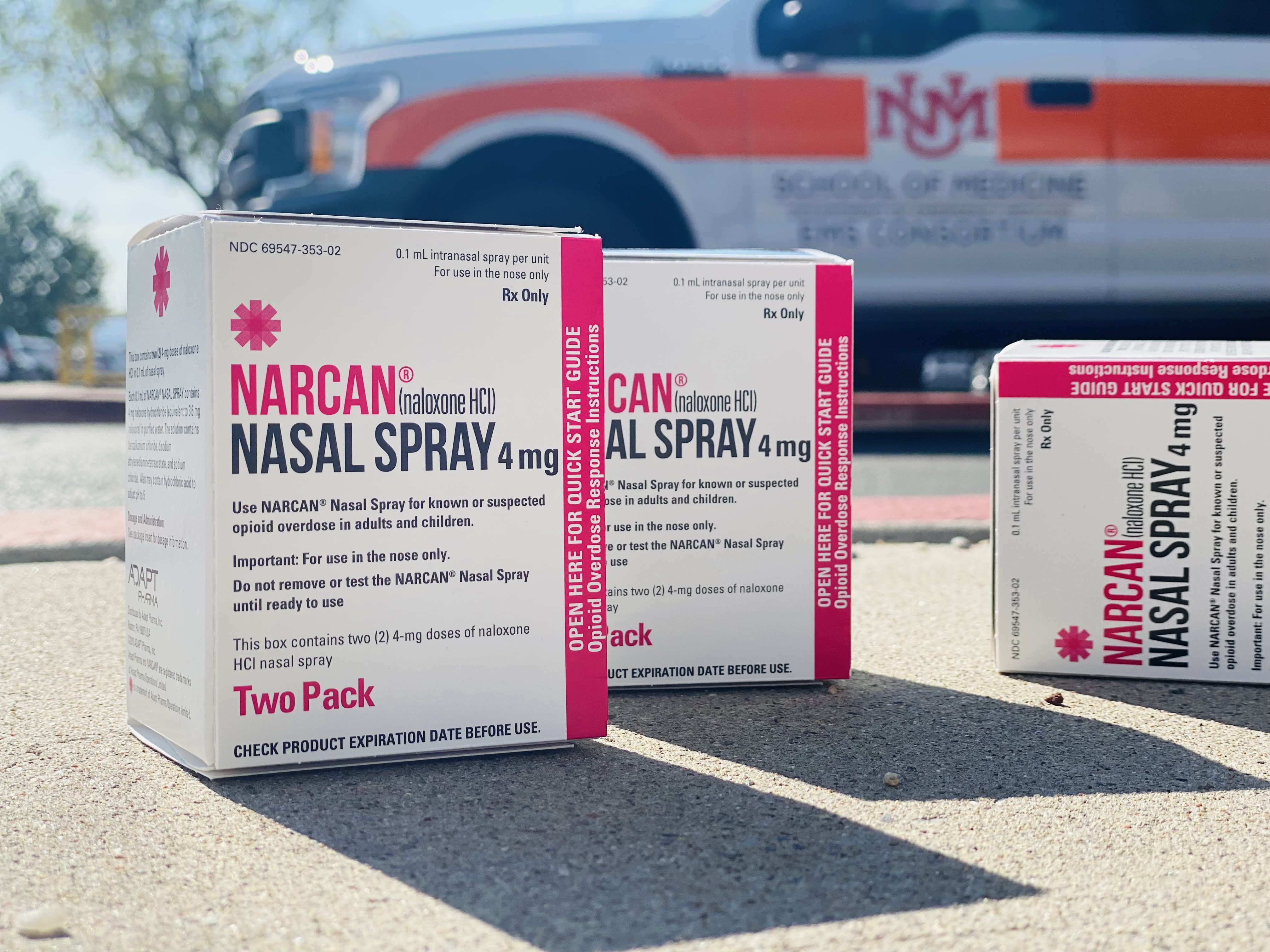Preparing for Disaster: UNM Hospital Participates in Region-Wide Emergency Training

Drug Disrupter
UNM EMS Medical Directors Distribute Lifesaving Medication to Reverse Opioid Overdoses
While the COVID-19 pandemic has understandably been foremost in most people’s minds, New Mexicans find themselves dealing with a less visible but equally lethal pandemic – of preventable drug overdose deaths.
Faculty members in The University of New Mexico EMS Medical Direction Consortium are trying to do something about it. For the past several months they have been freely distributing doses of naloxone (also known as Narcan), a medication that rapidly reverses overdose symptoms.
Kimberly Pruett, MD, assistant professor in the UNM Department of Emergency Medicine, has seen the carnage firsthand in her role as medical director for Albuquerque Fire Rescue and the Taos County Fire and EMS.
“Starting early last year we started to see a profound increase in the number of heroin and fentanyl overdoses,” she says. “Very young people were dying or nearly dead when we got there due to overdoses.”
Pruett believes the rise in overdoses is tied to the difficulties people have experienced in the COVID pandemic. “We are seeing record numbers of young people die every week from overdoses,” she says. “It has really spiked in the last year.”
People who overdose on opioid drugs like heroin and fentanyl are at risk of dying because the drugs suppress their urge to breathe, Pruett says. “In an effort to address that, these folks typically have friends and family that are near them that are aware of their addiction,” she says. “Equipping them with the means to save them is the goal.”
Naloxone, administered via a nasal spray, attaches to opioid receptors in the brain and blocks the effects of whichever opioid drug a person has taken. It has no effect on someone who does not have opioids in their system.
But getting naloxone into the hands of those who need it can be challenging.
Many times people are not quite at that place yet where they’re ready to quit or admit that this is a problem. This is a bridge to reduce the harm.
The EMS Medical Direction Consortium consists of Department of Emergency Medicine faculty and fellows who serve part time as medical directors for fire departments, rescue services and other agencies in northern and western New Mexico, says Jake Debevec, the consortium’s program coordinator.
“The consortium physicians that travel across the state carry doses with them, so we’re able to provide it anywhere,” he says. They may leave them with individuals who are at risk overdosing – or their family members.
“We do an on-site real-time training with them that takes about 30 seconds,” he says. “We emphasize if you suspect that they’re having an overdose, if they’re difficult to wake up, give them Narcan. If they have a pulse give the first dose and call 911. If there’s still no change you can give the second dose before 911 gets there.”
Debevec has worked with the New Mexico Department of Health to secure state funding to stockpile naloxone, which is among the more expensive medications carried by ambulance crews and first responders.
Although it’s best to transport someone who has survived an overdose to a hospital, some people refuse further care – but responders still leave them with a box of naloxone and information on gaining access to drug treatment programs.
“The harm reduction community has advocated for it,” he says. “We can’t stop people from using drugs, but we can identify them and provide them with resources. We not only give them the Narcan but we also provide them with some additional resources.”
Pruett says she and her fellow consortium members frequently respond to suspected overdose reports alongside EMS personnel.
“We’re out in the field in these communities all the time,” she says. “Having Narcan available to our physicians through the Consortium that we can leave with family members when someone overdoses – I would put it in the same category as tourniquets that stop bleeding or defibrillators.”
And while it might be preferable for someone who has just recovered from an overdose to go to the hospital, “Many times people are not quite at that place yet where they’re ready to quit or admit that this is a problem,” Pruett says. “This is a bridge to reduce the harm.”